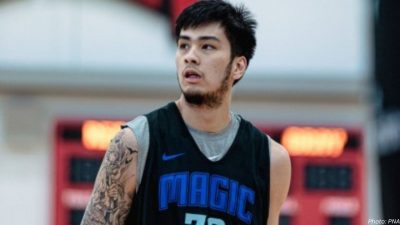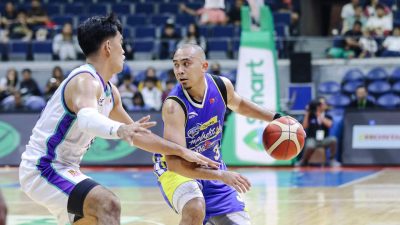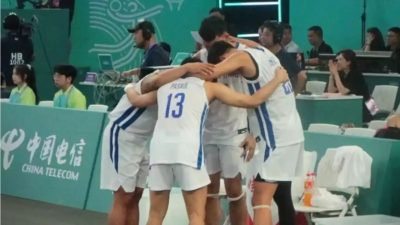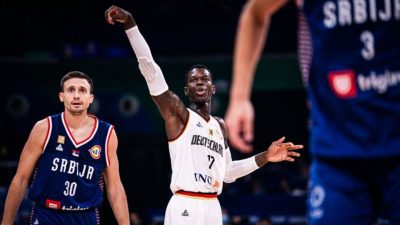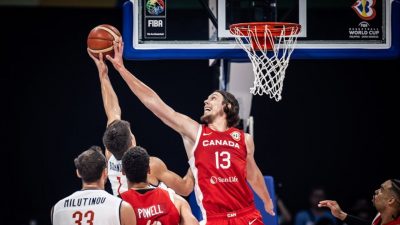MANILA — The 2023 FIBA World Cup has commenced, marking a captivating new chapter in the history of Philippine sports. As Manila takes the spotlight as the host city, it welcomes the grandeur of the 2023 FIBA World Cup, an unparalleled spectacle in the world of basketball.
Kicking off with today’s opening ceremony and matchups, including the showdown between Team Gilas Pilipinas and the formidable Dominican Republic, the FIBA World Cup will unfold over the ensuing 17 days. During this time, 32 teams that have emerged triumphant from a rigorous elimination phase will test their mettle in the ultimate clash, determining the reigning champion for the next four years.
Securing the opportunity to host this year’s FIBA World Cup was a hard-fought battle for the Philippines. Consequently, every possible effort has been made to ensure that this event resonates as a resounding success. The significance is underscored by the realization that such a golden opportunity might not present itself for decades to come.
While the Philippines shares the hosting duties with Okinawa and Jakarta, the pivotal medal rounds will unfold on Philippine soil. This represents an extraordinary treat for the millions of Filipino basketball enthusiasts eagerly anticipating the rare spectacle of witnessing the finest talents of Philippine basketball pitted against other internationally acclaimed players.
The country has prepared more than enough for this moment with no other than the country’s No. 1 sports fan in President Marcos declaring suspension of classes and work in Metro Manila and Bulacan to make sure basketball affionados come and watch live the biggest spectacle that’s about to unfold late afternoon Thursday, 25 August 2023.
The chief executive is expected to grace the opening rites at the caverous 55,000-seater Philippine Arena in Bocaue, Bulacan.
Labeling Filipinos as fervent basketball aficionados is no hyperbole. In nearly every neighborhood, a basketball court is a common sight. These courts might feature uneven hoops and rusted backboards, situated on simple patches of leveled ground. However, they serve as the initial training grounds for young, barefoot boys—the birthplace of dreams.
The origins of basketball in the Philippines have an elusive history, largely due to limited historical records. Some accounts attribute the game’s introduction to American educators towards the late 1800s, coinciding with America’s influence over the country. The sport was still in its nascent stage in the United States, having been conceived by Canadian-American doctor James Naismith in 1861.
The act of dribbling a ball and aiming it at a hoop (initially a peach basket with its base removed) swiftly captured the local boys’ interest, birthing a national pastime.
For a period, the Philippines held an unchallenged dominion over basketball in Asia, earning this accolade during the 1913 Far Eastern Games.
With time, this appeal evolved into a national fixation. Over a century later, basketball has cast its enchantment over an entire nation. The country boasts professional and semi-professional leagues, with basketball reigning as the premier sport in the UAAP and the NCAA. For numerous barangays (villages), a fiesta celebration remains incomplete without a basketball tournament.
As per reports, the Philippines ranks as Nike’s third-largest basketball market, trailing only behind the United States and China.
Tim Cone, a highly decorated PBA coach, captured the essence of the Filipino people’s affinity for basketball in a recent interview. He stated, “We have three seasons: rainy season, dry season, and basketball season, and we play basketball through it all. That’s the passion.”
Predictably, the ultimate aspiration for many young players is to represent the national team. Earning a spot on the roster, alongside the luminaries of Philippine basketball, is a distinct honor.
Carlos Loyzaga stands among the legends who proudly donned the national colors. Standing at six-foot-one, Loyzaga led the national team to a commendable third-place finish in the 1954 World Basketball Championship held in Rio de Janeiro. This achievement remains the Philippines’ finest performance in the precursor to the modern FIBA World Cup.
Numerous court heroes have answered the call to serve the Philippine team. Lauro Mumar shared the court with Loyzaga during the 1954 championship. Narciso Bernardo and Ed Ocampo became fixtures in various national teams, alongside Alvin Patrimonio, Bogs Adornado, Manny Paner, Ramon Fernandez, and Allan Caidic.
Robert Jaworski emerged as a driving force behind several Philippine teams.
It’s fitting that FIBA has chosen the Manila World Cup as the stage to posthumously induct Loyzaga into its Hall of Fame, commemorating his legacy.
The pursuit of basketball glory endures to this day. The Philippines’ Gilas squad will confront some of the globe’s premier teams. Positioned as the underdog, Gilas takes pride in its “puso” — an unwavering fighting spirit.
For this reason, Gilas merits the admiration and wholehearted backing of the nation as it revels in national pride, standing at the heart of the basketball universe for the upcoming two weeks. (ai/mnm)


